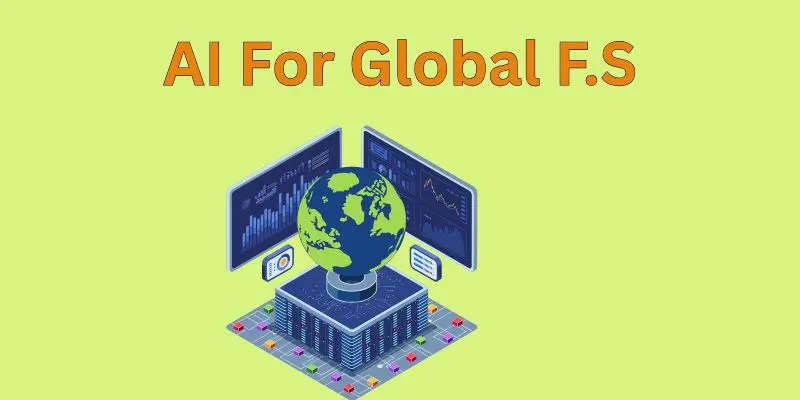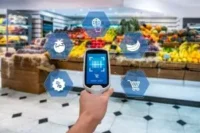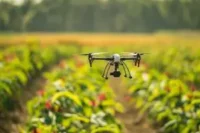Food Safety with AI: Protecting Every Bite We Eat
Published: 17 Aug 2025
We eat every day — fruits, vegetables, grains, milk, meat — but do we really know how safe our food is? It looks fresh, smells fine, and tastes good… yet it might carry invisible bacteria, dangerous toxins, or harmful chemicals. Shocking, isn’t it? The truth is, traditional inspections can’t catch everything. That’s where Artificial Intelligence (AI) steps in — a technology that sees what humans can’t, protecting our food and health like never before.
So, guys, without wasting time, let’s jump into the article to learn the Food Safety with AI: Protecting Every Bite We Eat
1. Early Detection of Hidden Dangers

- AI sensors can identify bacteria and toxins invisible to humans.
- Hyperspectral imaging scans food at microscopic levels.
- Fungal toxins detection in nuts, grains, and cereals prevents foodborne illness.
- Real-time alerts notify producers before contaminated food spreads.
- Public health protection through fewer outbreaks and recalls.
2. Smarter & Faster Food Inspection
- AI robots inspect thousands of items in seconds.
- 99% accuracy in detecting contamination compared to manual checks.
- Automated scanning reduces labor costs and human error.
- Consistency in quality across factories, supermarkets, and restaurants.
- Faster supply chain movement with safer products.
3. Predictive Analytics: Stopping Problems Before They Start
- AI analyzes climate and storage data to detect contamination risks.
- Predicts bacterial growth in perishable items like milk and meat.
- Early pest and disease warnings for crops and produce.
- Minimizes food recalls by preventing problems before they happen.
- Saves farmers and companies money while protecting consumers.
- Blockchain with AI ensures traceability “farm to fork.”
- QR codes for consumers show origin, handling, and safety info.
- Trust building between producers and buyers.
- Detects fraud (fake organic, mislabeled products, adulteration).
- Strengthens global food trade with verified safety standards.
5. Reducing Waste & Preserving Freshness
- AI monitors storage conditions (temperature, humidity, light).
- Smart packaging sensors track freshness in real time.
- Reduces spoilage by detecting early signs of rot.
- Retailers save costs with longer shelf life and less waste.
- More food for needy communities instead of going to landfills.
6. AI for Global Food Security
- 600+ million people fall sick annually due to unsafe food (WHO).
- AI boosts efficiency with safe food production at scale.
- Affordable food for low-income populations through better management.
- Supports UN goals of Zero Hunger & Good Health.
- Long-term stability in food systems against climate change challenges.

7. AI-Powered Consumer Awareness & Personalized Safety
- AI apps allow consumers to scan food for freshness and safety info.
- Personalized alerts for allergies (e.g., nuts, gluten, lactose) using AI-enabled labels.
- Dietary recommendations based on health data (safe food suggestions for kids, elderly, or patients).
- AI chatbots help customers ask about product safety and get instant verified answers.
- Boosts confidence as people know exactly what they’re eating and whether it’s safe for them.
FAQs about Food Safety with AI
Here are some of the most frequently asked questions about the FAQs about Food Safety with AI: Protecting Every Bite We Eat
A: Fresh-looking food can still hide bacteria, toxins, or harmful chemicals. AI detects these invisible threats that the human eye can’t see.
A: Manual checks are slow and can miss tiny details. AI scans thousands of items in seconds with much higher accuracy.
A: AI studies temperature, humidity, and storage patterns to predict spoilage early. This helps stop waste and ensures fresher food reaches you.
A: Yes, AI can detect bacteria and toxins like aflatoxins before food is sold. This reduces the risk of food poisoning and hospital visits.
A: At first, it can be costly, but AI saves money by reducing recalls, waste, and health risks. In the long run, it becomes more affordable.
A: With blockchain and tracking systems, AI can trace food from farm to fork. A simple QR code scan shows you the full journey of your meal.
Conclusion:
The content on Food Safety with AI highlights how artificial intelligence is transforming the way we protect our food supply. Key points include early detection of hidden contaminants, faster and more accurate inspections, predictive analytics to prevent risks, supply chain transparency, reducing food waste, strengthening global food security, and empowering consumers with personalized safety insights. Understanding these AI-driven factors is crucial because they not only safeguard public health but also build trust, reduce waste, and ensure long-term food security in a world facing rising population and climate challenges.

- Be Respectful
- Stay Relevant
- Stay Positive
- True Feedback
- Encourage Discussion
- Avoid Spamming
- No Fake News
- Don't Copy-Paste
- No Personal Attacks

- Be Respectful
- Stay Relevant
- Stay Positive
- True Feedback
- Encourage Discussion
- Avoid Spamming
- No Fake News
- Don't Copy-Paste
- No Personal Attacks





